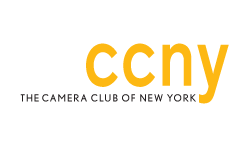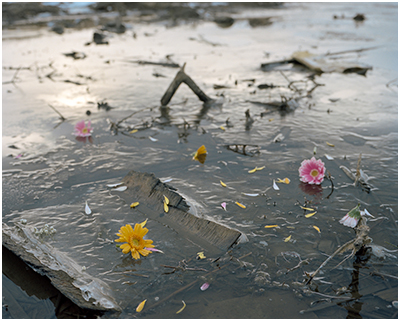 |
|||||||||||
Honorable Mention Artist: Ayano Hisa |
||||||||
Ayano Hisa Statement: FLOW In some areas of Fukushima, Japan, commercial plant productions are restricted since March 2011, whether if it is for food or for decorations. The explosion of the nuclear power plant, which followed after the massive earthquake and tsunami, spread dangerous amount of radiation in the surrounding area. Plants have been growing and coexisting with the radiation in the air and soil since then. Some of them even mistakenly absorb radioactive substances as nutrition and become deadly. In each photograph, there are plants that are brought from uncontaminated areas and plants that have been in the contaminated area. By juxtaposing them in one frame, I aim to raise questions about how we are going to live with the contamination. I also intend to let audience create their own idea about radiation in each photograph after finding out some of those familiar plants could actually contain a lot of radioactive substances. At the same time, I am documenting the plants, which are one of the living things that stayed there throughout the disaster. It seems to me that Japanese major media is avoiding to keep focus on this issue. It is like everybody is questioning about it in deep inside, but nobody is wiling to keep questioning about this enigmatic issue. It is indeed tiring to keep thinking about problems that never seem to be solved. When I think about it, I sometimes feel like my brain overheats and refuses to work. However, as long as the problem exists, we must keep raising the questions. After the explosion, many people were unfortunately exposed to the radiation. The domestic animals either starved to death or became wild, being exposed to the radiation every moment. Many of those animals that survived were culled by the government after all, because they were considered useless and dangerous. However, the damage is already made. Slaughter would not stop the environmental change. The radiation continues to flow in the air around the power plant, in the contaminated water that is being dumped from the power plant into the ocean, in people and animal’s body, and in the veins of plants. How are we going to live with this? Is the government going to keep killing animals if they find them contaminated? Are people going to have to always worry about their health condition before finding their love? How about matters in nature that cannot be controlled by human? Nobody can stop uncontaminated fish mating with contaminated fish in the ocean. Even the government cannot prevent dandelion fluffs to scatter in the wind. With this project, using familiar plants to many, I want to remind us that this disaster can happen anywhere in the world if there is a nuclear power plant, and the problem continues to put us in dangerous situation almost never-endingly, generations after generations. I started this project earlier this year and have photographed in the winter and early spring. I plan to continue this series to have photographs of more varieties of plants. Bio: Ayano Hisa is a 2013 fellow of the New York Foundation for the Arts. She has received several grants and awards including the Artist Grant from GBFund and the Architectural Photographer of the Year 2012 from the International Photography Awards. She presently works as a freelance photographer in New York. Her business clients include Newport Jazz Festival, Savannah Music Festival, and Jazz at Lincoln Center, among many others. Ayano was born and raised in Saitama, Japan. Her father, a jewelry designer, and mother, an art-lover, exposed her to the arts and music from early age. One of the precious art-related experiences her parents gave her when she was young was a trip to France, to see the exact location of Langlois Bridge at Arles by Vincent Van Gogh. Although she did not realize her interest in art at early age, the passion her parents have always had towards art grew in her as she became older. As soon as she moved to USA, she decided to travel across the country by Greyhound bus, camera in hand, and explored the history of American music. She received a BFA in Professional Photographic Illustration from the Rochester Institute of Technology in 2006 and a MFA in Photography from the Savannah College of Art and Design in 2009. Artist’s Website |
 |
|||||||